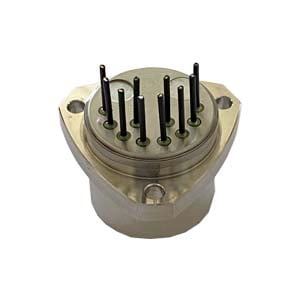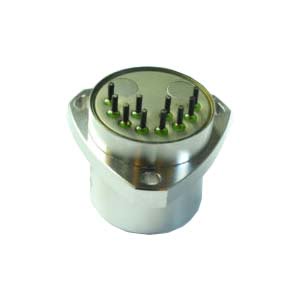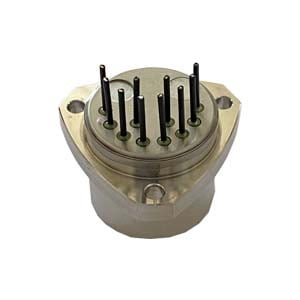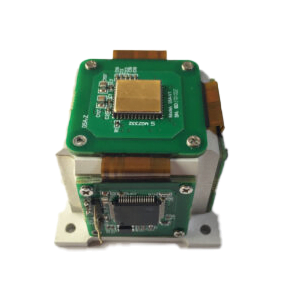Accelerometers consist of proof mass (also called sensitive mass), support, potentiometer, spring, damper and housing. The proof mass is constrained by the support and can only move along an axis. This axis is often referred to as the input or sensitive axis. When the instrument housing accelerates along the direction of the sensitive axis, according to Newton's law, the detection quality with a certain inertia maintains its original motion state. A relative movement between the housing and the housing causes the spring to deform, so that the proof mass accelerates under the action of the spring force. When the spring force is balanced with the inertial force generated when the proof mass accelerates the movement, there is no longer relative motion between the proof mass and the housing, and the deformation of the spring reflects the magnitude of the measured acceleration. The potentiometer acts as a displacement sensing element to convert the acceleration signal into an electrical signal for output. Accelerometers are essentially a one-degree-of-freedom oscillating system that uses dampers to improve the dynamic quality of the system.
There are many types of accelerometers: linear accelerometers (detection mass for line displacement) and pendulum accelerometers (detection mass rotation around the support shaft) are classified according to the displacement mode of the detection mass; gemstone support and flexible support are classified according to the support mode. , air floatation, liquid floatation, magnetic suspension and electrostatic suspension; according to the composition of the measurement system, there are open loop and closed loop; according to the working principle, there are vibrating wire, vibrating beam and pendulum integral gyro accelerometer; The number of input axes is classified into single-axis, dual-axis and three-axis accelerometers; piezoelectric, piezoresistive and potentiometer types are classified according to the sensing elements. An accelerometer is usually named by combining the characteristics of several different taxonomies.
Working principle
The quartz accelerometer is composed of yoke iron and soft magnetic material with low temperature coefficient and good magnetic permeability, and the magnetic steel is processed by grinding machine with permanent magnet material with good magnetic permeability. The material of the flexible sheet is quartz glass with excellent temperature performance, and the shape is made of ultrasonic processing. The processing of the flexible element generally adopts chemical corrosion method, and the whole flexible sheet can also be processed by reactive ion etching process, but the cost is very high.
The differential capacitance change induced by acceleration is detected by the differential capacitance detector in the servo circuit, whose output is current, which is changed into output voltage by the current integrator, and then the voltage is changed into output current by the transconductance compensation amplifier. The output current is proportional to the input acceleration.
Quartz flexible acceleration sensor is a single axis torque feedback accelerometer, which detects the external acceleration value by detecting the mass, then demodulated and amplified by the servo circuit, and finally the output current signal is proportional to the acceleration signal.
Quartz flexible acceleration sensor performance indicators High measurement accuracy, good repeatability, high reliability Small size, light weight, low power consumption. ER-QA-03A, as one of the representative high-performance quartz accelerometers, has zero bias stability of 10-50μg, scale factor repeatability of 15-50 PPM, Class II non-linearity repeatability is 10-30μg/g2. In addition to being widely used in aerospace and military fields, high-performance quartz flexible accelerometers are also widely used in automotive, medical and scientific research fields. In the field of scientific research, they can be used to study earthquakes, crustal movements, cosmology, and microgravity environments.
With the improvement of the performance requirements of the weapon system, the linear accelerometer can be installed in the moving object to directly measure its acceleration, and then get the speed and position, which has high measurement accuracy and good dynamic performance, far better than the air speedometer and odometer.
If you want to get more details about accelerometers,pls visit https://www.ericcointernational.com/accelerometer/
More Technical Questions
1.What is the Quartz Accelerometer Digital Closed Loop Servo Circuit?
2.Temperature Error Analysis of Quartz Accelerometer
3.What is the Effect of Temperature Coefficient on Quartz Accelerometer?
4.What is Sensitivity and Measurement Range in Quartz Accelerometer?
5.Study on the Stability of Quartz Accelerometer Head
6.What are the Advantages and Disadvantages of Quartz Accelerometers?
Products in Article







